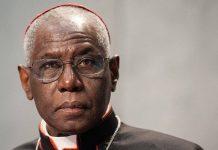From the Editor’s Desk (Monday, July 17, 2017, Gaudium Press) Following on from my blog last Thursday on the book The Priest Barracks by Guillaume Zeller, it is worth recording one other extraordinary circumstance that took place in the concentration camp: the ordination of a young deacon, Karl Leisner.
Born in 1915, he grew up in Kleve, and entered the Munich seminary in 1934. In 1939 he was ordained a deacon prior to ordination. Shortly afterwards, he was diagnosed with TB and was sent to a sanatorium. While there, he was reported by a fellow patient for making a brief remark critical of Hitler and was arrested and interned.
On 14 December 1941, he was moved to Dachau and assigned to the priests’ block. Under the harsh conditions of the camp his TB worsened and his hopes of being ordained a priest seemed unachievable. Then, as Providence would have it, Bishop Gabriel Piguet of Clermont-Ferrand arrived in Dachau as a fellow-prisoner on 6 September 1944 – and only a bishop is authorised to confer the sacrament of ordination. This was duly requested for Leisner by a Belgian priest, Fr de Coninck.
Bishop Piguet agreed, on condition that the ordination was authorised by the bishop with whom Leisner was affiliated and also that of the Archbishop of Munich, as Dachau was in his diocese. These authorisations were obtained clandestinely through the good offices of a young woman, Josefa Imma Mack (she was later to become a nun). She used to visit the plant shop at the edge of the compound at Dachau, where flowers and food grown by the prisoners was sold to the public, and where she was able to communicate with priest-prisoners assigned to work there.
She smuggled in the necessary letters of approval, along with the holy oil, a stole and the ritual books. The ordination, on 17 December 1944, took place in the chapel in Block 26 in great secrecy. Zeller records that the ceremony “made a lasting impression on the priests who were present.” The Bishop’s violet cassock was made from fabric from stocks pillaged by the Germans; the mitre was made by Fr Albert Durand, the only British priest at Dachau. Several hundred clergymen supported the young deacon, who wore an alb over his striped prison clothes.
Some imprisoned Protestant pastors also helped organise this most moving event and a Jewish violinist agreed to play some music near the barracks “to divert the attention of possible inopportune visitors.” Bishop Piguet later wrote his own memories of the ordination: “It was as though I were in my own cathedral or in the chapel of my major seminary. Nothing, absolutely nothing was lacking in the religious grandeur of such an ordination, which is probably unique in the annals of history.” He was given a small painted image of the ordination, with the inscription: “A captive for Christ, I gratefully initiated another captive of Christ into the priesthood.”
The newly ordained priest celebrated his first, and as it transpired his only Mass, on 26 December. By the time the camp was liberated on 4 May 1945 he was in the last stages of TB. Moved to a sanatorium outside Munich, he died on 12 August. Karl Leisner, former youth leader, known for his patience and even temper at Dachau, and whose deep inner spirituality was recorded in his diaries, was beatified by Pope John Paul II on 23 June 1966
Source Catholic Herald



































